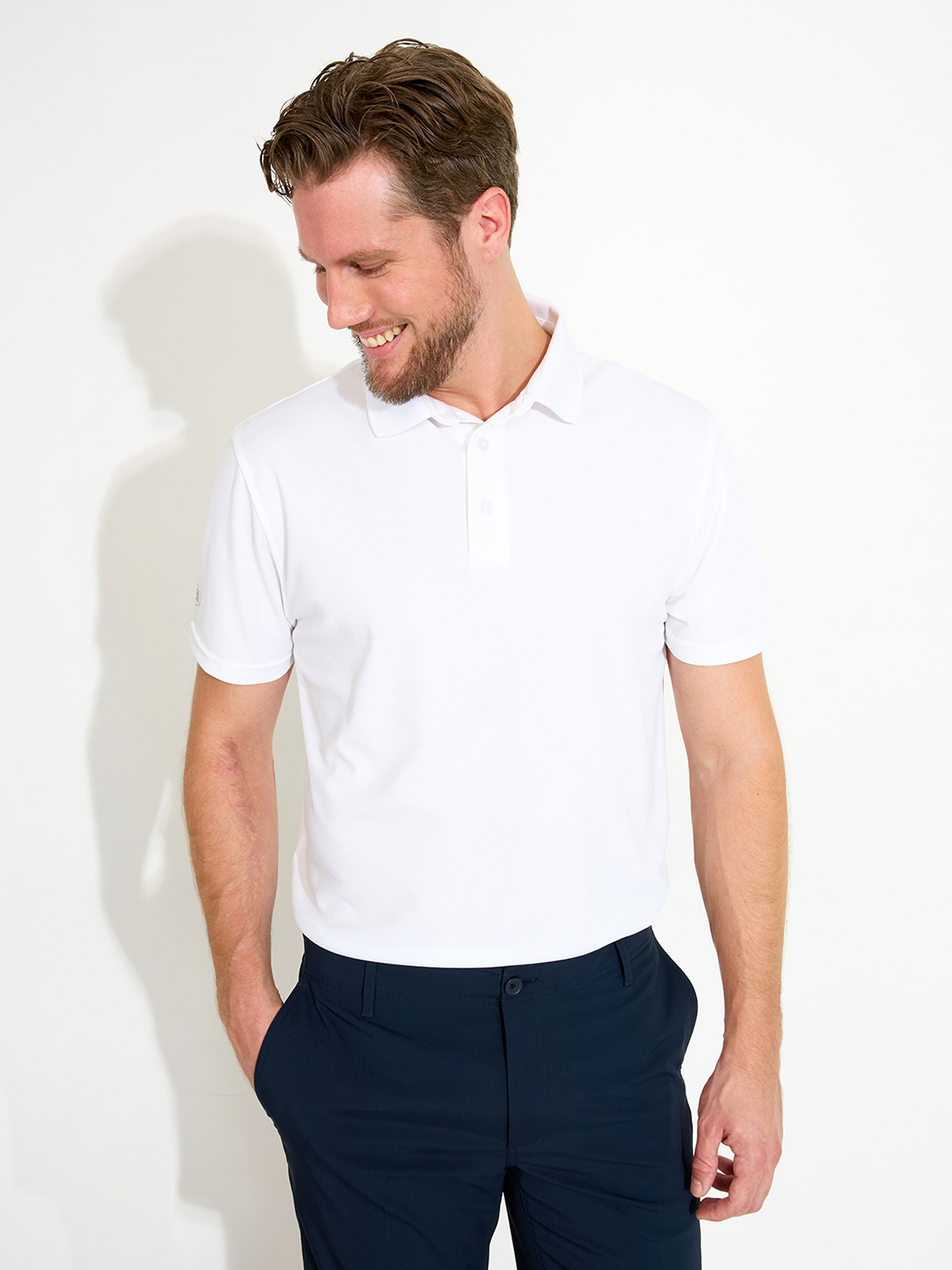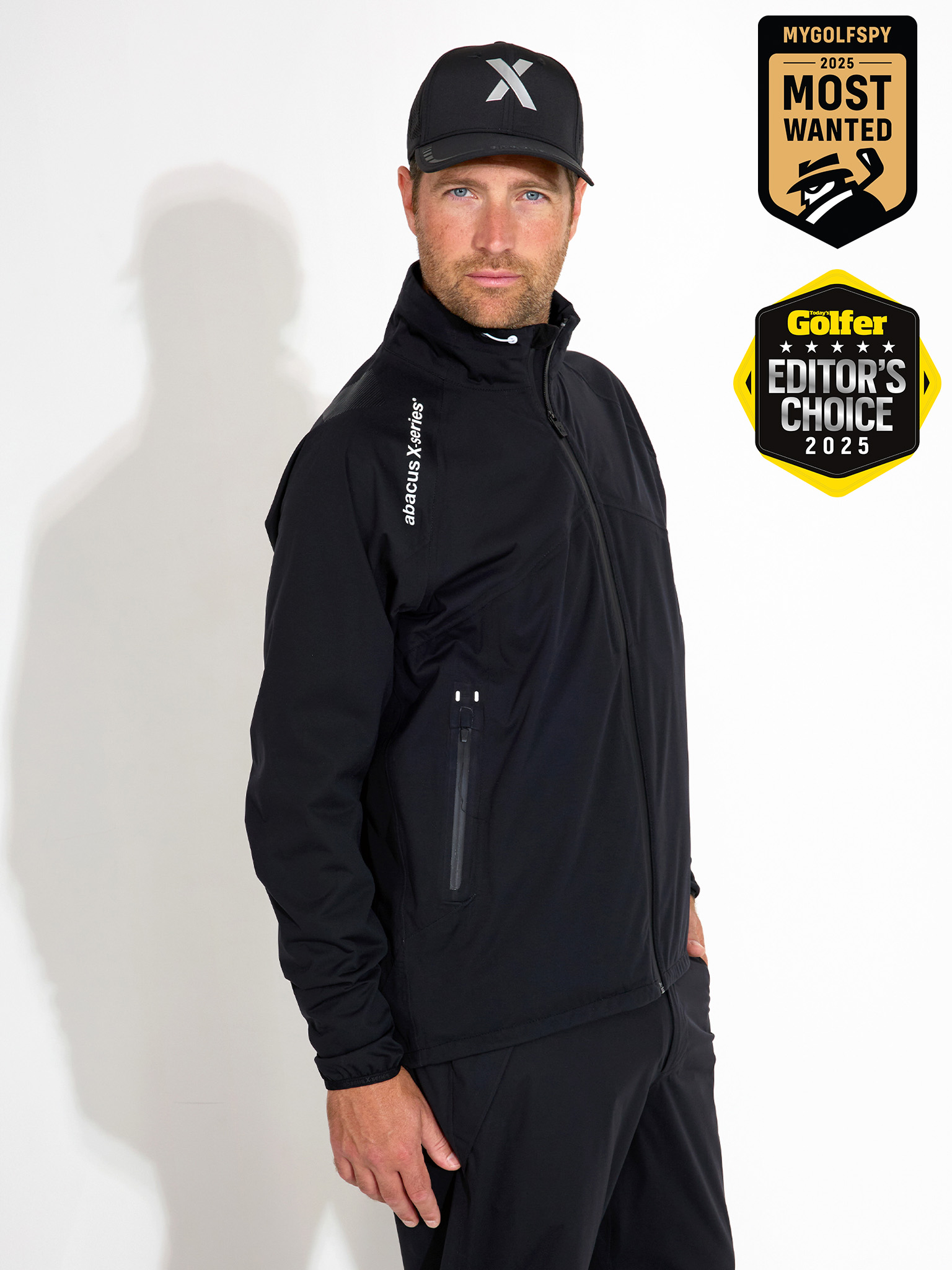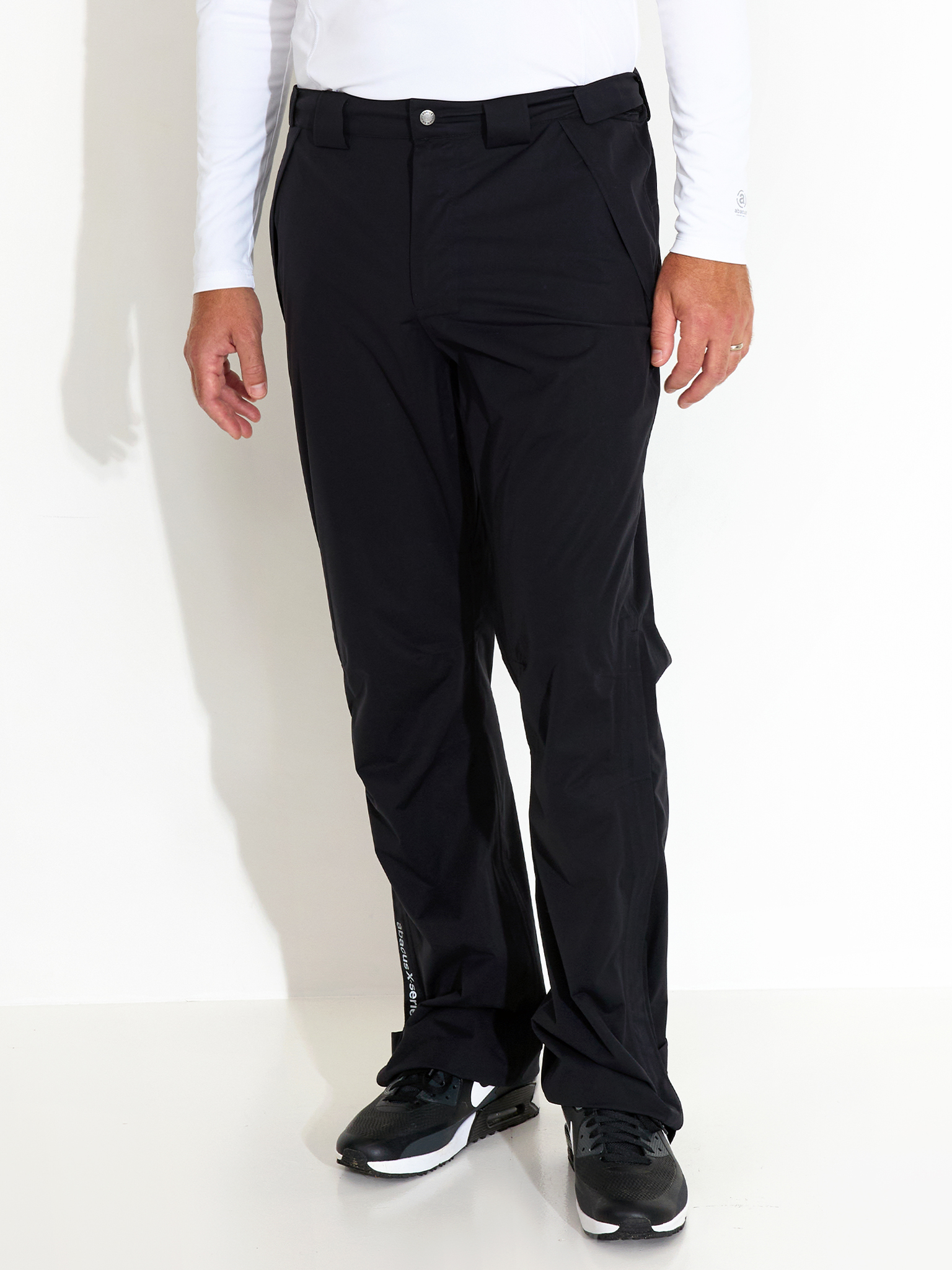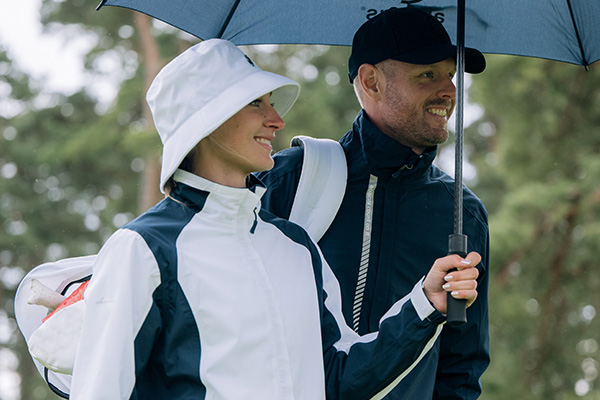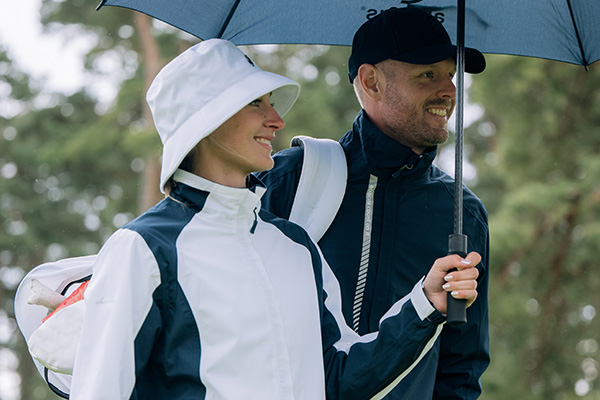
Hans Larsson is the coach of one of the world’s biggest golf talents, Ludvig Åberg, who as a Major debutante finished 2nd in the Masters 2024. In 2021 Hans was awarded Swedish Club Pro of the Year and he has been working with young golf talents at Riksidrottsgymnasiet (the National Sports High School for Golf) in Helsingborg for over 20 years.
In April 2024 Hans could celebrate the 2nd place for Ludvig in his first ever start in a Major and in 2023 Hans had the great and unique privilege of following no less than four of his former students while playing in the Solheim or the Ryder Cup European teams. In addition to Åberg and Sagström also Linn Grant and Maja Stark. These players had all attended the Helsingborg High school and had Hans Larsson as their teacher.
We have spoken with Hans about his role as teacher and coach.
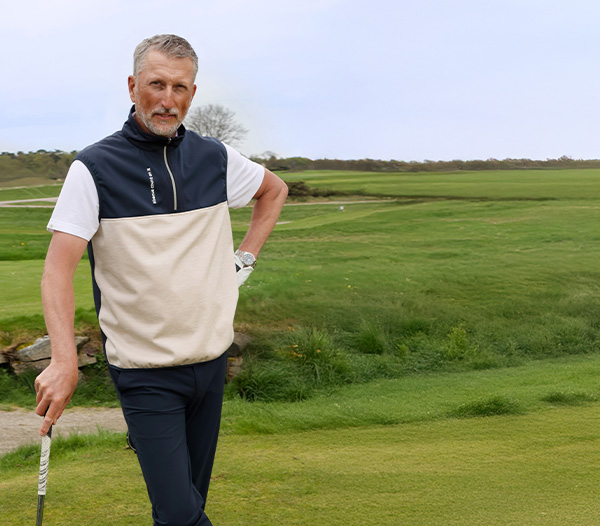
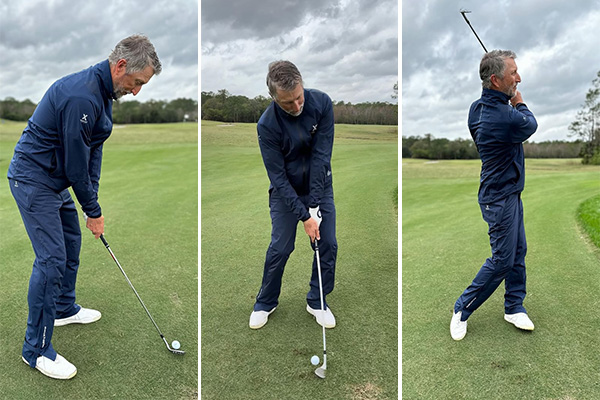
How can these successful players contribute to current students at the school?
- When our former students are in Sweden, they often come back to the school and train in the same facilities, alongside our current students. For example, Ludvig had a 2-hour clinic with the students here last winter.
- It becomes clear that professionals are also just ordinary people; that it is possible to succeed and play on the major tours, even if you come from a small northern country like Sweden. They show that there aren’t that many secrets, that the difficulty in succeeding lies in the simple act of doing the work, and that life as a professional is not always that luxurious.
How would you describe your role as a coach?
- My way of coaching is a bit different compared to what has long been a trend among professional players: working with several different specialist coaches. Many players have a coach for putting, another for short game, a third for mental training, etc. Naturally, each coach naturally thinks that their area is of highest importance. I want to emphasize the importance of looking at the big picture, training and competition combined. Often, specialist coaches are for example are only present before the competitions starts, to train with their various players. They are not around during the tournament, says Hans.
- I, on the other hand, often stay to observe the player's behavior during the competition and then bring my observations to future training sessions, so that we can focus on cause and effects, Hans continues.
- A player can perform well during training but not achieve the same results in competitions. Then it is valuable as a coach to be there, to see the whole picture, and form an opinion about what differs, says Hans. Often, it is not the technical aspect that affects the result in competition situations. Thoughts and nerves also have a significant effect on performance, as well as strategic thinking or, for example, the dialogue with the caddy. He concludes by stating that in many other sports, it would be unthinkable for a coach not to be present during matches.
The importance of clothing for performance
Naturally, we at Abacus see clothing as an important part of golf equipment. We also took the opportunity to ask Hans about his attitude towards golf apparel and how much impact it has on game performance. He doesn't hesitate: - it’s super clear that clothing is part of the equipment, and at Abacus you are extremely good at knowing what kind of functionality golfers need!
- For me personally, in the role of a coach, it gives me a great advantage to dress in layers. With thin, flexible clothing, even in many layers, it doesn't feel like I have put too much on. I can switch between standing still, observing, discussing and commenting without feeling cold; to stepping in, demonstrating and playing, without the clothes getting in my way. I can have four layers of clothing on, but the feeling is still that I'm in trousers and a polo shirt.

Hans Larsson is the coach of one of the world’s biggest golf talents, Ludvig Åberg, who as a Major debutante finished 2nd in the Masters 2024. In 2021 Hans was awarded Swedish Club Pro of the Year and he has been working with young golf talents at Riksidrottsgymnasiet (the National Sports High School for Golf) in Helsingborg for over 20 years.
In April 2024 Hans could celebrate the 2nd place for Ludvig in his first ever start in a Major and in 2023 Hans had the great and unique privilege of following no less than four of his former students while playing in the Solheim or the Ryder Cup European teams. In addition to Åberg and Sagström also Linn Grant and Maja Stark. These players had all attended the Helsingborg High school and had Hans Larsson as their teacher.
We have spoken with Hans about his role as teacher and coach.

First and foremost – how was it to follow Ludvig during his first Major tournament and to celebrate a second place?
Playing his first Major was one of Ludvig's big goals for this year, and I never doubted that he had the capacity required. It’s not at all surprising to me that he played so well and finished in second place.
For me personally, it was an amazing experience to be there, experience the US Masters and Augusta firsthand after following the tournament on TV for 40 years. I've also had the opportunity to meet the coaches of players such as Scheffler and Woods, which is incredibly valuable for me in my development as a coach.
You're also the coach of one of the big players now – have you received requests from others who want to hire you?
Absolutely, I have been getting requests for a while now, but I constantly decline. In order to coach more players, I would have to say no to something else, and I'm not willing to do that. I also want to continue my work as a teacher at Riksidrottsgymnasiet.

What do you think are the reasons for the great success of so many of your students?
- An important aspect for us, as well as at other golf schools, is that we provide an environment where there is a lot of time to focus on and work with each player over an extended period of time. A lot happens during the 4 years the students attend the school, and we work very closely with the players, both on the technical aspects and regarding how thoughts and feelings affect performance, from when they start as 15-year-old golf talents until they take the next step in their development, which often is college in the US.
- Then, of course, it is very inspiring to see someone with the same background as yourself reach the top; it becomes easier for those who come after to see that it is possible.
How can these successful players contribute to current students at the school?
- When our former students are in Sweden, they often come back to the school and train in the same facilities, alongside our current students. For example, Ludvig had a 2-hour clinic with the students here last winter.
- It becomes clear that professionals are also just ordinary people; that it is possible to succeed and play on the major tours, even if you come from a small northern country like Sweden. They show that there aren’t that many secrets, that the difficulty in succeeding lies in the simple act of doing the work, and that life as a professional is not always that luxurious.
How would you describe your role as a coach?
- My way of coaching is a bit different compared to what has long been a trend among professional players: working with several different specialist coaches. Many players have a coach for putting, another for short game, a third for mental training, etc. Naturally, each coach naturally thinks that their area is of highest importance. I want to emphasize the importance of looking at the big picture, training and competition combined. Often, specialist coaches are for example are only present before the competitions starts, to train with their various players. They are not around during the tournament, says Hans.
- I, on the other hand, often stay to observe the player's behavior during the competition and then bring my observations to future training sessions, so that we can focus on cause and effects, Hans continues.
- A player can perform well during training but not achieve the same results in competitions. Then it is valuable as a coach to be there, to see the whole picture, and form an opinion about what differs, says Hans. Often, it is not the technical aspect that affects the result in competition situations. Thoughts and nerves also have a significant effect on performance, as well as strategic thinking or, for example, the dialogue with the caddy. He concludes by stating that in many other sports, it would be unthinkable for a coach not to be present during matches.
The importance of clothing for performance
Naturally, we at Abacus see clothing as an important part of golf equipment. We also took the opportunity to ask Hans about his attitude towards golf apparel and how much impact it has on game performance. He doesn't hesitate: - it’s super clear that clothing is part of the equipment, and at Abacus you are extremely good at knowing what kind of functionality golfers need! (ta bort citattecken)
- For me personally, in the role of a coach, it gives me a great advantage to dress in layers. With thin, flexible clothing, even in many layers, it doesn't feel like I have put too much on. I can switch between standing still, observing, discussing and commenting without feeling cold; to stepping in, demonstrating and playing, without the clothes getting in my way. I can have four layers of clothing on, but the feeling is still that I'm in trousers and a polo shirt.

